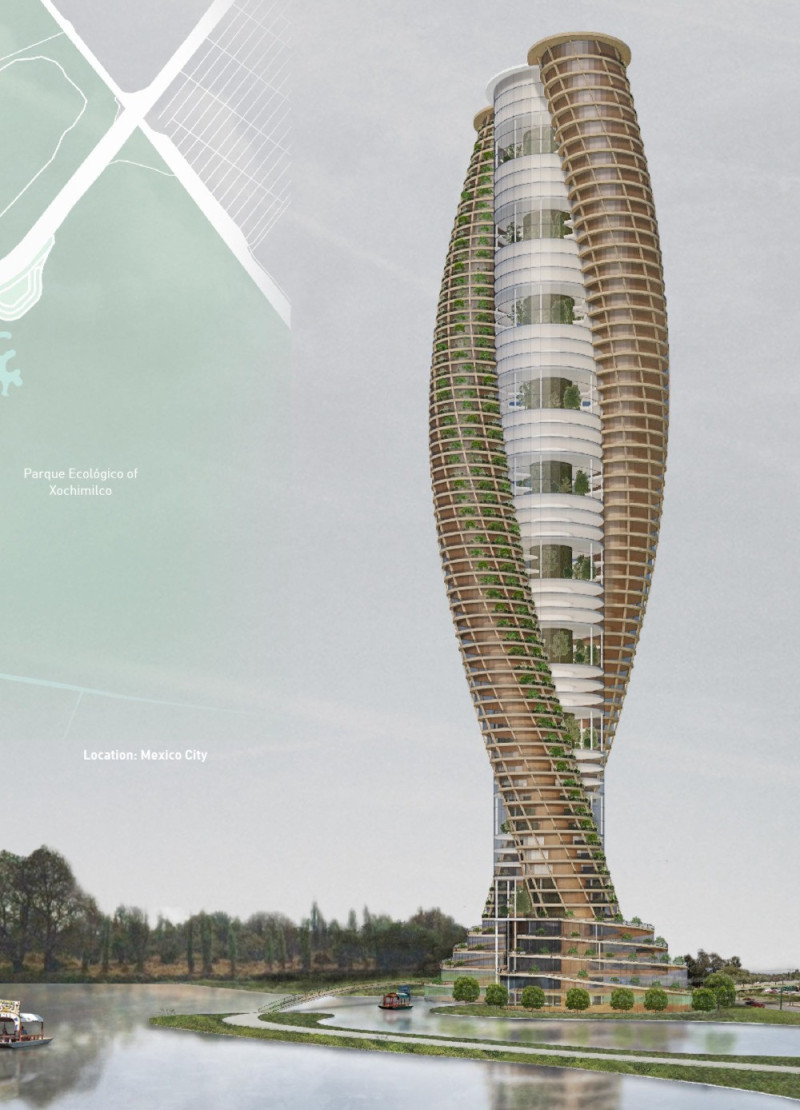5 key facts about this project
Torre Chinampa is located alongside the edge of the Parque Ecológico in Xochimilco, Mexico City. This building reflects a design that combines urban life with environmental awareness, celebrating its context as a cultural and ecological landmark. It includes various functions, such as commercial spaces, gardens, and social areas, while highlighting the importance of sustainability and community interaction.
Architectural Concept
Inspired by traditional agricultural systems known as Chinampas, the design of Torre Chinampa aims to create a close connection between the building and the surrounding natural environment. The structure features a spiral-shaped base, allowing access from both the urban district of Coyoacán and the extensive park area. This design encourages people to engage with their surroundings and promotes awareness of the ecological heritage of the region.
Structural Configuration
The building consists of three connected circular forms, each fulfilling specific purposes while representing the roots of the trees central to the Chinampa system. These circular spaces accommodate areas for commerce, social gatherings, and relaxation. The layout fosters a sense of community, with design elements that encourage interaction among users and create inviting spaces for shared experiences.
Materiality and Sustainability
Materials play a vital role in the overall design. Wood is used for the outer circles, chosen for its environmentally friendly properties that help reduce carbon emissions. In contrast, concrete and steel are utilized in the inner circle, providing the structure with strength and durability. The integration of green terraces supports the building's ecological objectives, capturing rainwater for irrigation and enhancing the natural atmosphere.
Design Details
The terraces, which extend from each circular form, offer not only shade but also opportunities for planting. This enhances the relationship between the building and its ecological surroundings. These green spaces contribute to the overall environment and provide areas where people can relax and engage with nature, creating a balance between the built and natural worlds.



















































